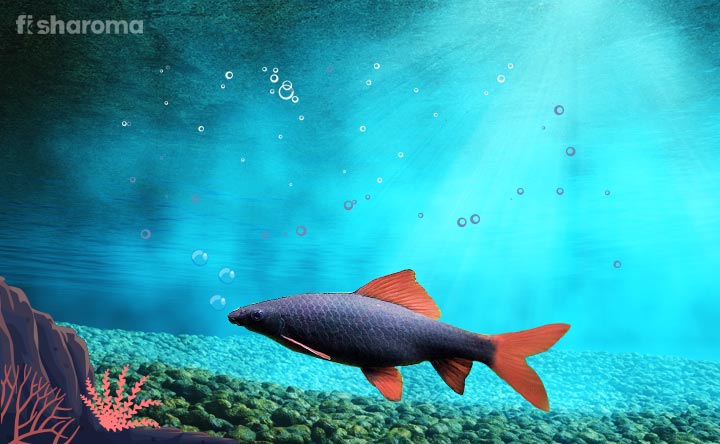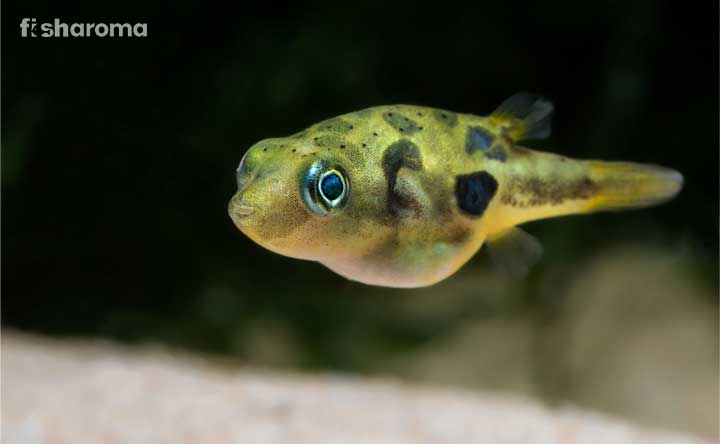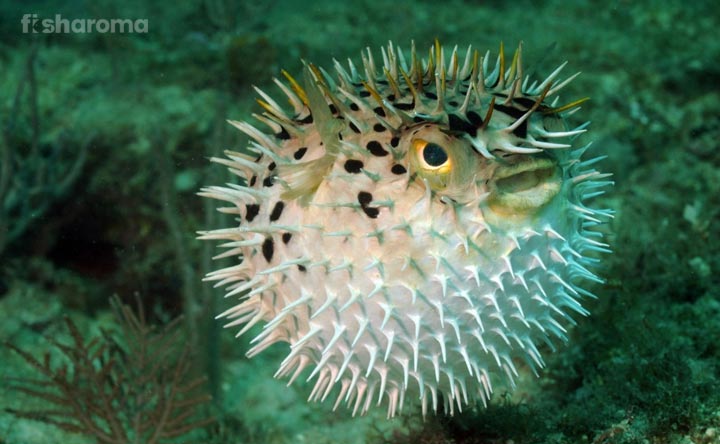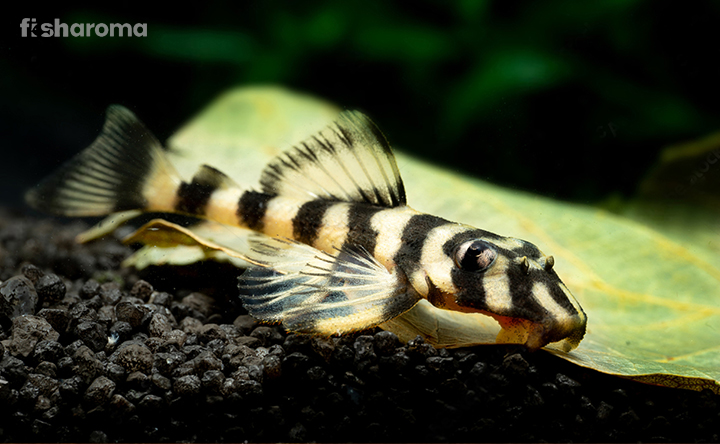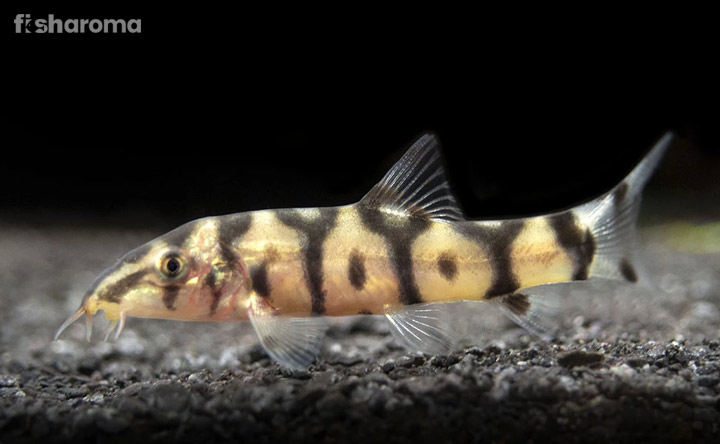Rubber Lip Pleco – The Suckermouth Algae Eater And Its Care Guide
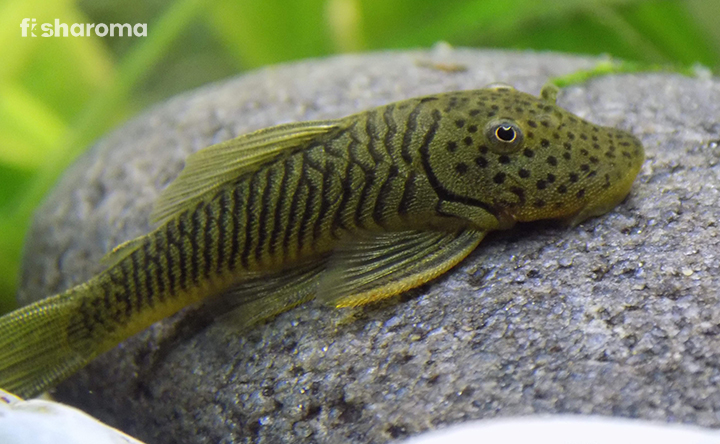
- Origin And Habitat Of Rubber Lip Pleco
- Appearance Of Rubber Lip Pleco
- Behaviour Of Rubber Lip Pleco
- Lifespan Of Rubber Lip Pleco
- Diet Of Rubber Lip Pleco
- Tank Requirements For Rubber Lip Pleco
- Water Type For Rubber Lip Pleco
- Compatibility Of Rubber Lip Pleco
- Breeding Of Rubber Lip Pleco
- Diseases And Treatments Of Rubber Lip Pleco
- Summary
The Rubber Lip Pleco or Rubber Lipped Pleco, one of the tiny Suckermouth fishes, is laden with all the ideal attributes of a pet fish, but with less fame. This Plecostomus fish is a no-nonsense species, that stays at the bottom of a tank, conforming to its family traits, and peacefully entertaining the aquarist in its own way. The small fish with its South American origin, prefers to consume algae to a great extent, and it is one of the famous algaevores. Again, that is a common trait that it shares with its cousins, which means with other Plecos.
This Suckermouth Catfish is uniquely named, because of its particular feature, involving its lips. But, before jumping to the appearance and physical description, let’s concentrate on the key factors of the species that can help budding aquarists with basic information.
Key Specifications Of Rubber Lip Pleco
| Origin | South America |
| Lifespan | 10-12 years |
| Colours | Pale grey with dark markings (variable) |
| Temperament | Peaceful |
| Size | Around 7 inches |
| Diet | Omnivorous |
| Reproduction | Egg laying |
| Maintenance Requirements | Easy |
| Tank Size | 30-70 gallons |
Overview
While in the aquatic world, the fish has been conferred the title of Rubber Lip Pleco, scientifically it is known otherwise. Belonging to the classic Suckermouth Catfish group, the fish has a binomial name, Chaetostoma milesi. Being one of the popular types of Pleco, it has a good lifespan that often crosses a decade and this is a genetic thing. Although the right amount of care propels the lifespan extensively. Even taking care of the species is not a hard task and now we will tell you how to do the simplest job.
Origin And Habitat Of Rubber Lip Pleco
The Rubber Lip Pleco is found in South American countries. More specifically, it is the Apuré River Basin of Venezuela and Magdalena River Basin of Columbia, where these fishes are naturally found.
These Plecos swim in slow-moving waters, where the waterbody is shallow in nature. These fishes can be seen in comparatively smaller river streams that can eventually mix with vast and wide water bodies.
Last but not the least, all these habitats of the fish are by default freshwater and despite there are a lot of changes regarding the temperature and water conditions, the type of water is a must. The habitat part is elaborately described here because you need to provide exactly these kinds of conditions, for the fish, at your home.
The species is strong enough to handle many changes around it, because the climate of the zones is such that there will be rain. Summer is also common, and all these periodical shifts of nature change the natural equation, but the fish is strong enough to withstand all of these.
Appearance Of Rubber Lip Pleco
Powered with 8 dorsal rays, the fish has a typical Pleco-like physical trait. This is quite an obvious statement because Plecos are known to be similar in their looks and nature. If you compare two species together, you will find commonalities unexpectedly. Anyway, moving onto the appearance section in a detailed way, and we will start with the rays. Apart from the dorsal ones, there are around 5 anal rays in general.
The lips of the fish is rubbery and it is kind of sticking out of the fish, making it prominent, so much so, that the species is named after it. Apart from these, the Rubber Lip Pleco has a couple of elevated eyes that are more on the head, rather than on two sides of the face. The cheek spines are hooked and they are also 5 if you count them.
The entire body has a tapered shape that starts immediately after the head, and this is why the head part is wider than the rest of the body.
Size
The size of the fish is all mostly around 7 inches, which is a kind of small to medium size for aquarists. But, there are some specimens that only grow to be 5.5 and sometimes, maybe a little bit more.
Colour
The colour of the fish might vary from one individual to another, due to the water quality, gender, and a lot of similar factors. There is some misinformation regarding the hues of the Rubber Lip Pleco. In general, it shows a greyish body with some irregular markings and patterns. Sometimes the base colour is different in the old and juvenile fishes. The fish has a dotted face, while the marking on their body starts somewhere from their pectoral fin.
Some Rubber Lip Plecos are dark brown in shade and they have even darker patterns on their body. Regardless of their darkness, the base colour and the hues of the body colours are always different and easily distinguishable.
Behaviour Of Rubber Lip Pleco
The Rubber lip Pleco is a gentle fish that showcases an extremely docile temperament throughout its life. This is a bottom-dweller species, and most of the time likes to spend time in search of algae either from the substrate or from the tank glass.
While the fish is resting or staying motionless, its dorsal rays are also at rest, but from the moment it starts swimming, it uses those rays which become crested immediately. The Rubber lip Pleco uses its pectoral fins for both resting and swimming, and that happens when the fish uses the fins when it manoeuvres through the water. This fin is also used as a support system during resting time.
Rubber Lip Pleco is a nocturnal species, and despite your daytime feeding routine, this species will stay active all night long and eat throughout the time.
The peace-loving fish is not usually scared of other fishes, unless there are any predators along with them, kept together. The fish is happy in its own company and doesn’t need anybody else. All it wants is algae, algae, and more algae. Yes, it can feed on algae all day long and that too from different platters. It could be the substrate, the rocks, or any other bogwoods or driftwoods that are kept inside the tank.
Lifespan Of Rubber Lip Pleco
The fish can live for around 12 years and that is quite a long time. Some species can actually live for around 10 years as well and even that is okay for them. However, this standard lifespan of the Rubber Lip Pleco depends on your care factor. A malnourished fish can never make that long, and that is a given. Similarly, if you take care of the fish, and make sure that it is getting all that it requires, then it can live for a good amount of time.
There are pros and cons attached to this fact. The good thing is that the fish will give you company for longer years than many of your tank buddies. The thing that is more serious is that as an aquarist, you need to be ready for a long term commitment and that is something you should think about prior to purchasing a Rubber Lip Pleco.
Controlling the lifespan is not in anybody’s hands, still all you can do is to ensure that regardless of the fishes’ life expectancy, it can lead a healthy life. That is why the conditions are essential to fulfil.
Diet Of Rubber Lip Pleco
The fish eat algae profusely and there are no two ways about it. Although the fish is considered as omnivorous still it doesn’t need much when it comes to meaty food. It can adjust with the leftover food of other fishes, especially the shrimps (if any, inside the tank).
Other than that, the fish can be fed vegetables like spinach, spirulina, seaweed algae sheet, lettuce, zucchini, and peas. This is mostly because not all tanks produce a sufficient amount of algae. For that, you have to supply some vegetarian diet and the vegetables mentioned above could be your options. You can provide some market-ready foods ideal for the Plecos.
Sometimes, some Plecos might be more interested in trying out other foods, you can give them Algae Wafer and flake diets for that matter.
As far as the feeding time is concerned, you have to control the diet, or else it will be overfed. We suggest you give them proper food for 5-6 days a week and give them one or two days of break. This will help them prevent any digestive issues that might happen to them due to irregular overeating. Treats should be given in restriction because if they are habituated with treats only, they will refuse routine foods that are essential for them.
Tank Requirements Of Rubber Lip Pleco
The Rubber Lip Pleco is a fuss-free fish species, but when it comes to tank setup, they require a lot of conditions. Although those are basic things, like plants and smooth surfaces. But, without them, Plecos can’t function properly and they undergo a lot of stress. Without wasting any moment further, let us throw light on how to set up a fish tank.
Tank Size
The Pleco needs to be in a sizeable tank because you are not going to keep a single species in a whole tank. There will be a lot of other decorative things as well, and nothing can hamper the space that the fish needs. Some aquarists keep a single Pleco in a 15-gallon tank, and that is somewhat okay as long as there is nothing else. The ideal, however, is 30-gallon tanks, where the tank will be properly decorated for the Plecos. Remember that this size is only for a single Pleco and not for multiple ones.
If you wish to have multiple of them (decide after reading the compatibility section), then the tank size should be bigger by 48.25 x 12.75 inches in diameter.
The size of the tank can obviously be bigger if that is meant for a community fish hub, and we suggest opting for a 70-gallon tank, housing compatible fishes, shrimps, and the Plecos together.
According to many advanced breeders, they prefer keeping a fully matured Pleco inside a 70-100-gallon tank, so that it never gets to any scarcity of place. This is crucial because the fish will be under a lot of stress if it can’t manage swimming freely.
Tank Lid
The Rubber Lip Pleco is not a jumping kind of fish, but many of the tank mates could be, so a tank lid is significant. Even if your Pleco is the only one inside the aquarium, a lid is a must. This is due to the function of the lid as a protective shield against all the harmful pollutants that might attack the tank.
Substrate
The wild Rubber Lip Pleco, like its many cousins, spends most of its life near the riverbed which is soft. This has to be provided in the aquarium as well. The substrate has to be soft and smooth so that the belly and fins are safe from any injury. Soft pebbles are the best option for the Suckermouth Catfish.
Filter
The Canister Filter is a good option or you can give some Hang on Back Filter. The filter is always necessary so that it can keep the water quality clean. Not only this, the tank should have a bubble maker attached to it. Apart from these, ensure that the air pump is always there. All these things will make the tank set-up comfortable and hence, ideal for the Pleco. The filter should be able to create a medium to high water flow.
Ornaments
Driftwood is absolutely necessary because that will be a source of algae. Since the fishes love Alage, anytime and every type, you can’t skip this part. Along with that, keep some rocks, smooth ones of course, and some logs. These will act as their food source, and hiding spot at the same time. There are some artificial hiding decorative items, you can incorporate them, but make sure they don’t have any sharp edges that can potentially harm the fish.
Lighting
Plecos don’t need bright lighting so you have to arrange for something that is low and smooth. Go for minimum lights that will enable you to see the species. Extreme brightness will be harsh on their eyes and most of the fishes will prefer subdued lights.
Presence Of Flora
The Pleco loves to stay around plants and it never destroys them, although you can see the fish scavenging something from your plants. This is because they are taking out the algae from the plants and nothing else. Live plants should be plenty in amount, inside the aquarium.
Their wild habitat has thick and dense plantations and they feel comfortable around them. There is one more reason why you should opt for heavy plants, and that is they are shelters for your Plecos, from harsh lights, (if any). Even if your fish is stressed by someone inside the tank, then such plants will help them. Also, the species is a nocturnal one, and they can use such dark shades during the daytime.
Cleaning Method
The tank of the Pleco should remain clean. The filter works all the time, but manual cleaning includes water change and rubbing off all the dust or dirt from the rocks and other ornamentations. The tank glass should be cleaned with a towel so that there is clear visibility all the time.
The water change should be done partially because extreme water change would be shocking for the fish. No fish can take up the trauma of going through 100 % water change, that too at once.
Water Type For Rubber Lip Pleco
The fish needs a freshwater tank for surviving in captive breeding. But is that enough information? No, because there are many types of freshwater tanks, and you need to ensure other parameters like the warmth, acid content, and other technical details that will keep your Suckermouth Catfish well.
Temperature
The Rubber Lip Pleco needs to be within a range of 21-26 Degrees Celsius. That is the most suitable range and little fluctuation can be handled though, as long they are not for a long time.
You should keep an aquarium heater all the time, not necessarily that will be used, but having one around is a must.
pH Level
The pH level of Rubber Lip Pleco should be within 6.5-8. It is always better to maintain this range because otherwise, it can cause some problems for the fish species.
Hardness
The carbonate hardness of the water should be within 8-12 dKH.
Compatibility Of Rubber Lip Pleco
Rubber Lip Plecos are usually a gentle fish but they have a territorial nature that can make them attack anybody around them. But, that is not a frequent thing, but a possibility. Having mentioned this, we must say that a Rubber Lip Pleco is the most aggressive when it encounters species of the same genus or type. Otherwise, it is a docile species and you have to keep its mates according to their behaviour.
Suitable Tank Mates
Rubber Lip Pleco would be an ideal choice if you have a community fish tank. They are usually not the ones to mess up with others unless they have any interest there. They are good to stay with
- Cory Catfish
- Bala Shark
- Congo Tetra
- Neon Tetra
- Roseline Torpedo Shark
- Fancy Goldfish
- Zebra Danio
- Bolivian Ram
- Ember Tetra
- Cherry Barb
- Green Neon Tetra
- Honey Gourami
- Gold Barb
- Sparkling Gourami
Unsuitable Tank Mates
Fishes that are larger than these Plecos and aggressive at the same time are not at all suitable options. Also, these Plecos might consider many tiny fish species to be their meal, so try to avoid them at any cost.
- Aggressive Cichlids
- Any other Plecos or Catfishes
Breeding Of Rubber Lip Pleco
Breeding of Rubber Lip Pleco in-home captivity is not possible, at least it has not been so far. Whatever species that are seen in the aquarium world, are mostly taken from their wild distribution. It is believed that whenever they breed (in captivity) they would require a really big tank for their comfort factor. It might be as big as 300 gallons to be more precise, but you should never expect that breeding would take place in your aquarium.
Diseases Of Rubber Lip Pleco
The Rubber Lip Pleco does not easily get sick if it receives all the proper conditions all the time. There are certain things that you need to provide as far its water and food parameters are concerned. It is not like such fishes are immune to diseases, rather it can be put in a way that the fishes are hardy. But, some individuals do get affected by some common diseases like ich. Also, their body is sensitive to copper and aquarium salt, so those have to be used (whenever necessary) in moderation or best under the guidance of an expert.
Summary
The Rubber Lip Pleco is a timid fish that mostly stays at the bottom. This pleco is a small and perfect aquarium choice for beginners. Taking care is not an issue at all because these fishes come with normal parameter requirements. Just keep the tank clean enough so that there are no hygiene-related issues.
Other Similar Care Guides
If the article Rubber Lip Pleco is informative enough for you, please take a look at our other articles on Pleco fishes.
- Snowball Pleco – This polka-dotted one is a beauty to behold. Tiny and belonging to the freshwater habitat, this is any day a good option to add to your aquarium without a single iota of doubt.
- Zebra Pleco – This is also a Pleco that has a typical black and white combination. When it roams around the tank, you will fall in love with the fish.
- Bristlenose Pleco – This peaceful fish is actually a darling species to call your own. The beautiful patterns and colouration make it a star of any fish tank. It has the ability to cohabit with other fishes.

